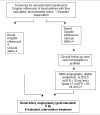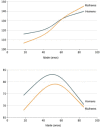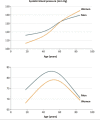Brazilian Guidelines of Hypertension - 2020
- PMID: 33909761
- PMCID: PMC9949730
- DOI: 10.36660/abc.20201238
Brazilian Guidelines of Hypertension - 2020
Figures






































Comment in
-
Letter to the Editor Regarding the Brazilian Guidelines of Hypertension - 2020Reply.Arq Bras Cardiol. 2022 Jul;119(1):139-142. doi: 10.36660/abc.20210873. Arq Bras Cardiol. 2022. PMID: 35830115 Free PMC article. English, Portuguese. No abstract available.
References
-
- Forouzanfar MH, Liu P, Roth GA, Ng M, Biryukov S, Marczak L, et al. Global burden of hypertension and systolic blood pressure of at least 110 to 115 mm Hg, 1990–2015. JAMA . 2017;317(2):165–182. - PubMed
-
- Précoma DB, Oliveira GMM, Simão AF, Dutra OP, Coelho OR, Izar MCO, et al. Atualização da Diretriz de Prevenção Cardiovascular da Sociedade Brazileira de Cardiologia – 2019. Arq Bras Cardiol . 2019;113(4):787–891.
-
- Whelton PK, Carey RM, Aronow WS, Casey DE, Jr., Collins KJ, Himmelfarb CD, et al. Guideline for Prevention, Detection, Evaluation and Management of High Blood Pressure in Adults. J Am Coll Cardiol . 2017;201:23976 - PubMed
MeSH terms
LinkOut - more resources
Full Text Sources
Other Literature Sources
Medical

